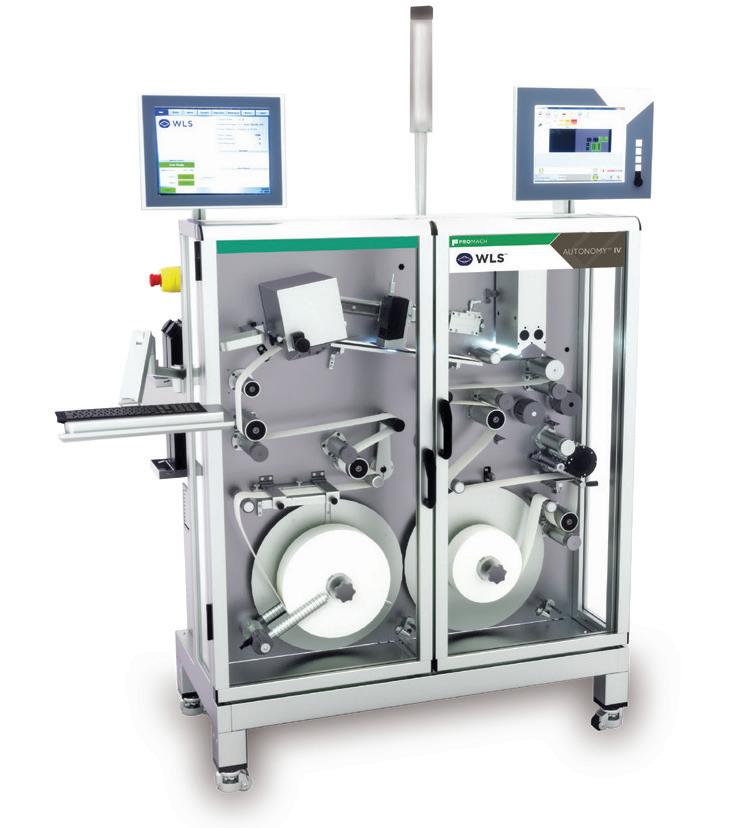
4 minute read
Sustainability
Sustainable Package Reformatting on the Rise
KIM OVERSTREET, CONTENT STRATEGIST
Brand owners and retailers are “hungry” for new sustainable format packaging solutions, and 56% of CPGs are switching or considering new packaging formats to improve recycling.
In 2019, the Flexible Packaging Association reported that 67% of brand owners were putting more effort into sustainability efforts, and statistics show consumers are buying these sustainable products. In the U.S., products marketed as sustainable made up $113.9 billion in sales in 2018, an increase of 29% from 2013. Sustainable products grew, on average, 5.6 times faster than products not marketed as sustainable, and accounted for 50% of CPG market growth from 2013 to 2018.
But while reducing packaging’s impact on the environment can build brand loyalty and connect with customers, changing a product’s packaging format—particularly novel and/or highly functional changes—can add challenges when testing and formatting new materials, according to PMMI’s report, Packaging Sustainability: A Changing Landscape. Also, CPGs are looking for even greater machine flexibility to handle variances in recycled materials.
“One of our main challenges is communicating the up and down sides of implementing sustainable packaging with CPGs to help make them aware of the impact at all levels of their organization,” said a packaging services director at a material supplier.
Some of the format changes that CPGs are implementing include using more standup pouches than bags; moving from PVC to PET, or from PET to aluminum; changing from rigid to flexible or returning to paper from plastic; eliminating bags and filling directly into paperboard cartons; migrating from 100% virgin plastic to 100% PCR plastic, or using more sustainable labels.
An operations director at a personal care company said, “Our goal is 100% recycled materials in the future; looking for biodegradable closures now but we have not yet found a solution.”
Materials innovations such as recyclable barrier layers, renewable plant-based materials, or 100% recyclable mono-material with barrier properties are all being explored, and while biodegradable and compostable materials are becoming more popular, other exciting innovations like edible membranes are emerging.
These changes create challenges. The pharmaceutical industry requires thorough equipment validation with each packaging change. Conveying lighter gauge materials can cause jams, and sealing and closing during filling can be a problem with thinner film. Also, machinery requires highly reliable data collection from sensor feedback to measure sustainability goals accurately.
Download the FREE executive summary of the report (PMMI Members can download the entire report) at hcpgo.to/376.
For the latest in sustainable packaging design and materials, make plans to visit PACK EXPO International/Healthcare Packaging EXPO 2020. For more information visit packexpointernational.com.
Recycling Takes Another Hit During Pandemic
The coronavirus pandemic is creating a growing waste crisis even as we see images of the earth’s environment clearing from less pollution. A few months into the crisis, the numbers are staggering.
According to a Jun. 22 article by The Economist, the U.S. consumption of single-use plastic may have grown by 250-300% since the beginning of the pandemic. Consider these numbers: Grand View Research projects the global disposable-mask market will spike from an estimated $800M in 2019 to $166B in 2020; Amazon had approximately 2.5 billion customers visit in March alone, an increase of 65% from 2019; Uber Eats first-quarter sales were up 54% from 2019; and, more than 25% of China’s physical goods were bought online during Q1 2020, according to the Peterson Institute for International Economics.
All of these figures add up to an increase in plastic and packaging. And to add fuel to the proverbial fire, the oil market crash early in the year made plastic cheaper to produce, which in turn is a (temporary) disincentive to use recycled materials.
Label and code vaccine vials at high-speed with quick changeover and improved OEE

VR-72 is the latest generation continuous trunnion labeler and coder capable of achieving speeds over 700vpm
VR-72 LEADS THE MARKET
• Increase output via continuous label print and application
Minimize label skew with repeatable 3-point vacuum drum application
Eliminate rejected labeled vials with automatic label Reconciler prior to application econciler prior to application
Reduce changeover downtime with a single change part and integrated HMI recipes

VR-72 is the labeler of choice for North American COVID vaccine labeling applications
AUTONOMY™, a state of the art, high-speed, full color digital label printer. Merges artwork and variable data in real-time with full label inspection. Provides printing press quality and speed, in-house and on-demand.




AUTONOMY™ Printing what you need, when you need it!
WEILER LABELING SYSTEMS
For 30 years, Weiler Labeling Systems (WLS) has been designing, manufacturing, integrating and supporting the most sophisticated and advanced pressure sensitive labeling solutions in the marketplace.










